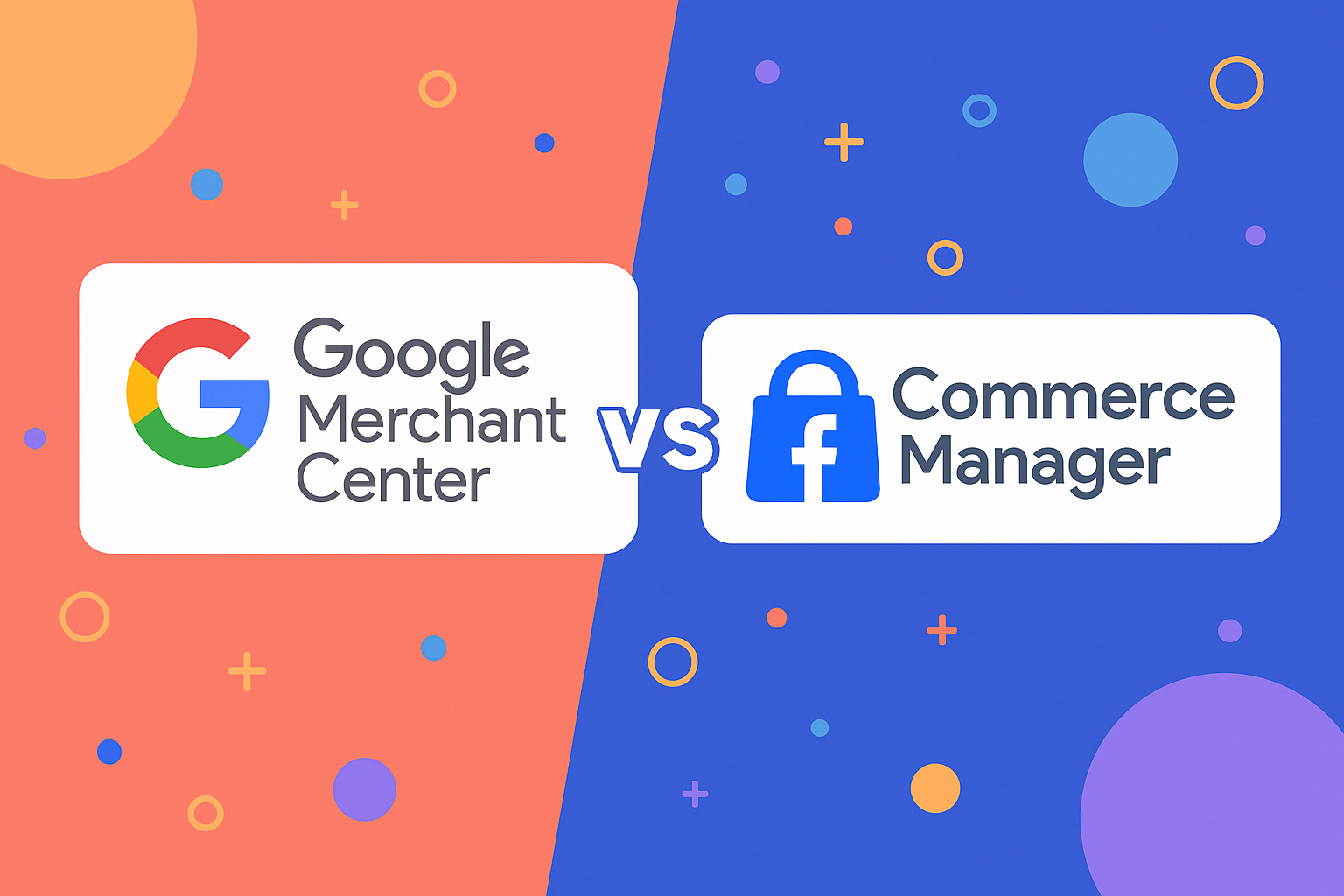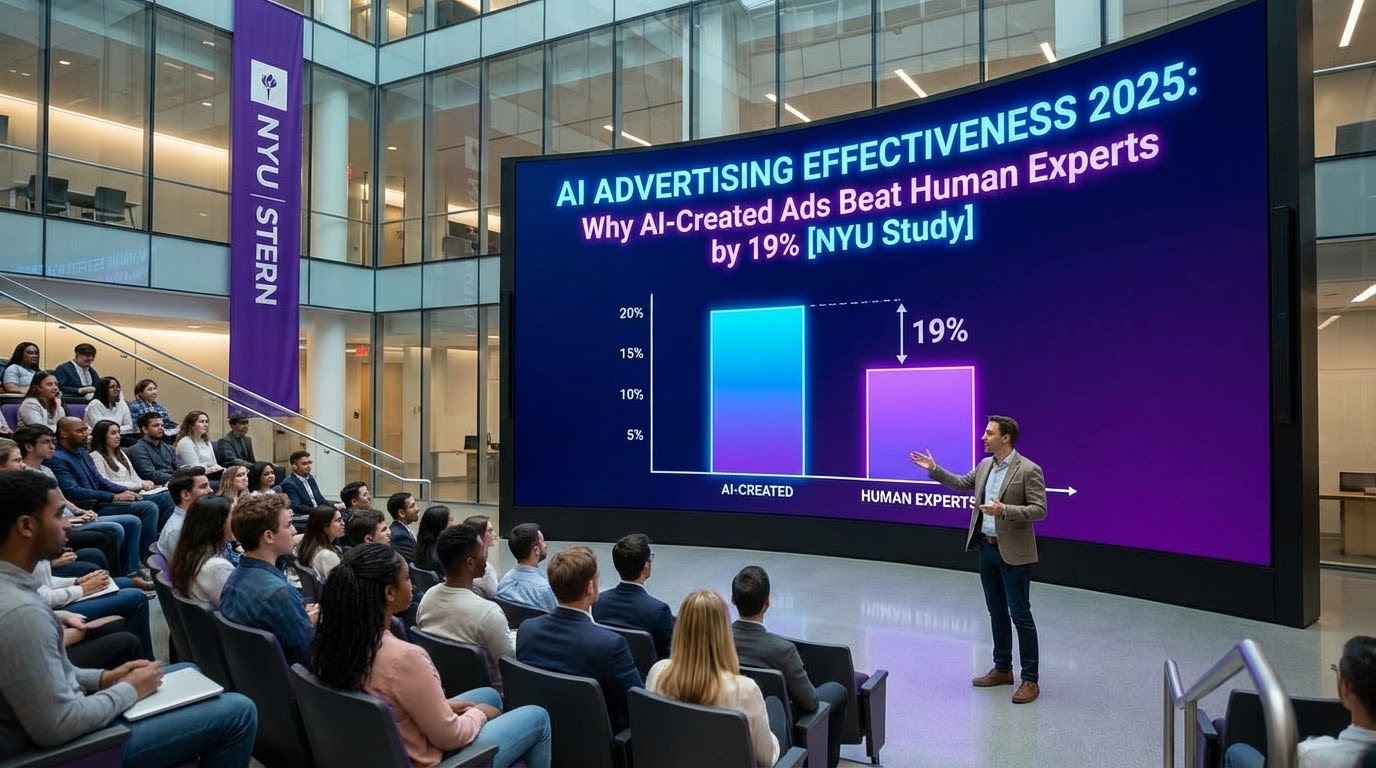
Google Merchant Center vs Facebook Commerce Manager: How to optimize your product feeds for multi-channel ecommerce paid media performance?
Product feeds as a performance media performance driver
For e-commerce brands and multichannel advertisers, product feed quality is a strategic performance lever on both Google Merchant Center and Facebook Commerce Manager.
As automation grows (PMax, Advantage+, etc.), feed optimization is no longer just a technical task — it’s a business lever. Title, description, image, categorization, labels… every attribute affects your ad delivery, algorithmic efficiency, and contextual relevance.
The key? Tailoring your feed precisely to each platform’s specific requirements.
1. Mandatory attributes: The 9 essentials to align
2. High-value attibutes that drive results
- gtin / mpn: required for branded products; influences Google indexing.
- item_group_id: essential for variants (size, color...)
- Apparel attributes:
color,size,gender,age_groupare required for clothing on Google. - sale_price: strikethrough price is a strong conversion lever.
- google_product_category: recognized by both Google and Meta.
- custom_label / internal_label: for campaign segmentation, CRM logic, A/B testing.
🧠 The more enriched your feed, the better your products perform—through better exposure, indexing, and relevance.
3. Platform-specific attibutes: What’s unique to each
A/Google Merchant Center Exclusives
identifier_exists,multipack,is_bundle,availability_date- Advanced pricing attributes (installment, subscription, loyalty_points...)
- AI-driven attributes:
structured_title,structured_description ads_redirect: useful for A/B testing landing pages
B/Facebook Commerce Manager Exclusivities
inventory,quantity_to_sell_on_facebook: required for US checkoutvideo_url: up to 20 videos per productrich_text_description(HTML supported via bulk upload)status(active/inactive),internal_label(not moderated)
4. Technical constraints and formats to anticipate
5. Ideal architecture: master feed + adaptation engine
❌ Manually duplicating feeds per platform is inefficient and error-prone.
✅ Leading feed management platforms like Channable, Feedonomics, and Lengow use a master feed and apply transformation rules per channel.
But when it comes to performance media on Google, Meta, TikTok or Pinterest, you need a specialized solution like Feed Enrich by Dataïads.
Feed Enrich dynamically applies:
- Title truncation tailored to Google
- Removal of promo terms
- Completion of missing attributes
- Channel-specific logic (Meta Advantage+, PMax...)
All powered by multimodal AI that leverages product data + ad signals.
6. SEO & visual best practices to boost discoverability
Headlines
- Recommended structure: Brand + Product + Attributes + Keywords
Ex.: “Nike Air Max 90 Men's Black 42 Trainers” - Prioritize the best performing keywords at the beginning of the field
Descriptions
- Clear, factual, benefit-oriented
- Minimum 500 useful characters, no promo text
Categories
- Use Google taxonomy (ID or full label)
- Minimum level: 2 (e.g.: “Home > Bedding > Pillows”)
Images
- High definition: >800x800px
- No text, watermark, or logo
- 3 to 10 visuals per product (angles, zoom, lifestyle...)
🛠️ The platform Dataïads makes it possible to generate en masse enriched product visuals from the master feed (different angles, virtual test, on model photos or “lifestyle”, etc.), by combining the best multimodal AI models. Ideal for scaling your product visuals in order to optimize the multimodal flow of advertising products. Discover Dataïads' generative AI functionalities in a demo today.
7. Summary: comparative table of the main attributes
Conclusion: automate to scale product optimization
When you manage a substantial, fast-paced, multi-channel e-commerce catalog, manual optimization quickly becomes a bottleneck for the marketing team.
🎯 To scale media performance, the future requires platforms ofproduct optimization driven by specialized e-commerce AI, like Feed Enrich by Dataïads.
They allow:
- dynamic adaptation to the requirements of each channel (Google, Meta, TikTok...)
- a segmentation by country, objective, season...
- intelligent enrichment (texts + visuals)
- unified management of advertising product data
✅ It is the ideal way to transform your catalog into an advertising profitability engine.
FAQ – For Marketing & Acquisition Leaders
→ Why structure a single master feed?
For consistency, governance, and scalability. It becomes the single source for Google, Meta, Pinterest, TikTok—and can be enriched/filtered for ad use cases.
→ Why not reuse the same raw feed everywhere?
Because each ad platform has its own rules, limits, and opportunities. A feed optimized for Google may underperform on Meta—and vice versa.
→ What makes Feed Enrich different?
Unlike traditional feed managers, Feed Enrich:
- Detects and fills missing attributes via AI
- Adapts content formats (titles, visuals, descriptions)
- Creates intelligent variants per channel
- Tracks performance uplift (ROAS, CTR, AOV) by enrichment type
→ Is it only for large advertisers?
Feed Enrich is ideal for catalogs with 500+ SKUs. That’s where the ROI is highest.
Continue reading

AI generated content in e-commerce: what legal obligations and what business impacts - 2026 edition

Agentic AI and New Shopping Dynamics: Understanding the Rise of AI-Driven Shopping in 2026

AI Advertising Effectiveness 2025: Why AI-Created Ads Beat Human Experts by 19% [NYU x Emory Study]
.svg)







